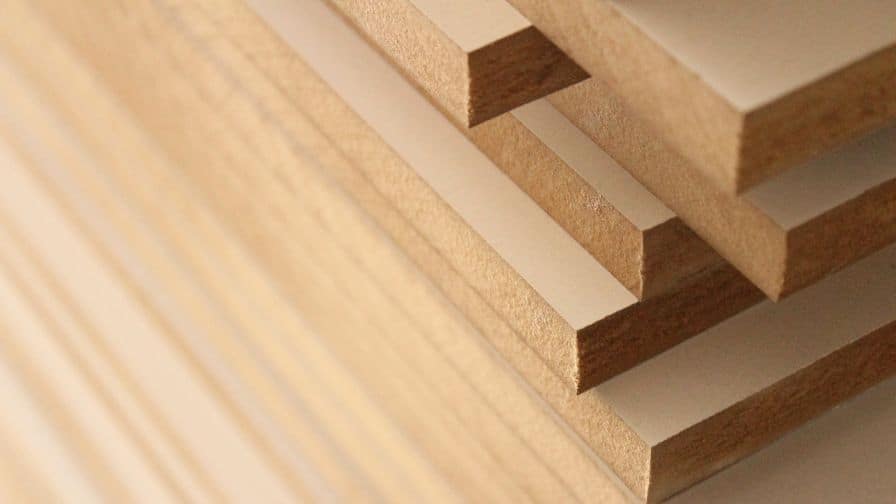
Shellac is a great way to finish your MDF projects. It will protect the wood from water and other liquids, and it will also give your project a nice shine. In this blog post, we will discuss the benefits of using shellac on MDF, and we will also provide some tips on how to apply it properly.
Should I Use Shellac On MDF?
Yes, shellac not only protects MDF from moisture and wear but also gives the material a beautiful amber color. Plus, it’s easy to apply and dries quickly.
If you’re looking for a versatile, beautiful finish for your MDF project, shellac is the way to go. Plus shellac gives MDF nice color. Give it a try! You won’t be disappointed.
MDF, or Medium Density Fiberboard, is a composite material made of wood fibers and resin. It’s denser as compared to particle board and softer as compared to plywood, making it a popular choice for cabinet doors, shelving, and other woodworking projects.
A natural resin, shellac comes from the lac beetle. When it’s dissolved in alcohol, it makes a clear, hard-drying finish that’s perfect for protecting surfaces like MDF.
What Is Shellac And What Are Its Benefits
Shellac is a natural resin that is secreted by the lac bug. It has been used for centuries as a finish for wood and other surfaces. Shellac is available in many different colors, but most people choose to use clear shellac. Because it is a natural product, shellac is non-toxic and safe to use. Shellac is easy to apply and can be buffed to a high shine.
One of the biggest benefits of shellac is that it dries quickly. This makes it ideal for use on projects that need to be completed promptly. Shellac is also versatile and will surely last for many years with proper care. Shellac is also water resistant, making it a good choice for use in areas that may be subject to moisture.
Shellac can be applied directly to bare wood or over-stained and painted surfaces. It is important to remember that shellac should not be used on surfaces that will come into contact with food such as cutting boards, as it is not food safe. When applying shellac, always use a clean, lint-free cloth and be sure to work in a well-ventilated area.
How To Apply Shellac Properly
Subscribe to Russ Haynes
Shellac is an excellent product for sealing and protecting surfaces like MDF. It’s easy to apply, dries quickly, and provides a versatile finish. But there are a few things you need to know before you start shellac-ing your MDF project.
First, make sure the surface is clean and free of any dirt or debris. Shellac won’t adhere properly to a dirty surface.
Next, decide which type of shellac you want to use. There are two main types of shellac: dewaxed and waxed. Dewaxed shellac is ideal for sealing MDF because it penetrates the surface more easily and provides a stronger bond. Waxed shellac is more commonly used for finishing wood because it’s easier to apply and provides a more consistent finish.
Once you’ve selected your shellac, it’s time to start applying it. The best way to apply shellac is with a brush or a rag. Dip your brush or rag into the can of shellac, then use it on the MDF surface in a thin, even coat.
Shellac dries quickly, so you’ll need to work in small sections. Once you’ve applied shellac to one section, move on to the next section and continue until the entire surface is covered.
Once the shellac has dried, you can apply a second coat if desired. Just repeat the process outlined above.
Shellac is a great way to seal and protect MDF surfaces. It’s easy to apply, dries quickly, and provides a versatile finish. Just be sure to follow the steps outlined above to get the best results.
The Pros And Cons Of Using Shellac On Mdf
There are pros and cons to using shellac on MDF.
One of the biggest advantages is that it creates a smooth, seamless surface that’s perfect for painting or staining. Shellac also seals in odors and prevents warping, cracking, and swelling.
On the downside, the shellac finish is not resistant to heat. So, avoid placing hot objects on it. Also, shellac is a food-grade finish, but it’s not recommended for use on surfaces that will come into direct contact with food.
If you’re considering using shellac on MDF, weigh the pros and cons before deciding. Ultimately, the best finish is the one that meets your needs and fits your budget.
What Is The Best Sealant For Mdf
It depends on the project you’re working on and the look you’re going for. In general, we recommend using an oil-based varnish or sealant on MDF. This will help protect the wood from moisture and prevent warping or cracking over time.
If you’re not sure which finish using on your MDF project, we suggest testing a small area first. This will help you get a feel for how the shellac or varnish will look once it’s applied.



